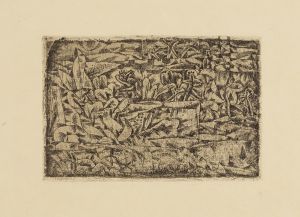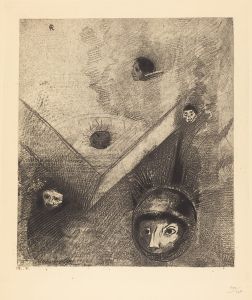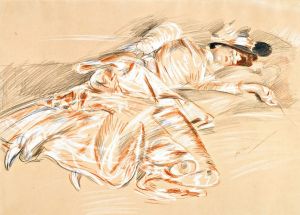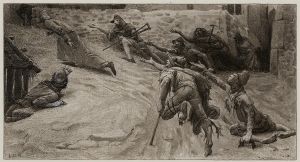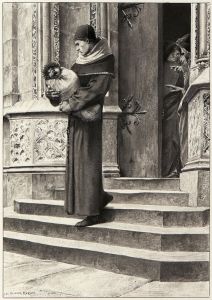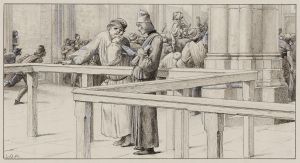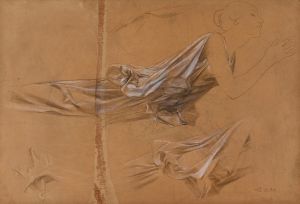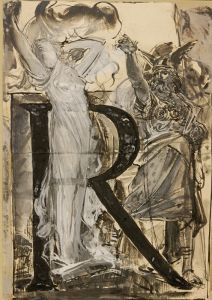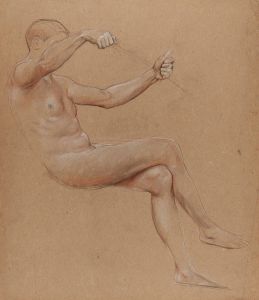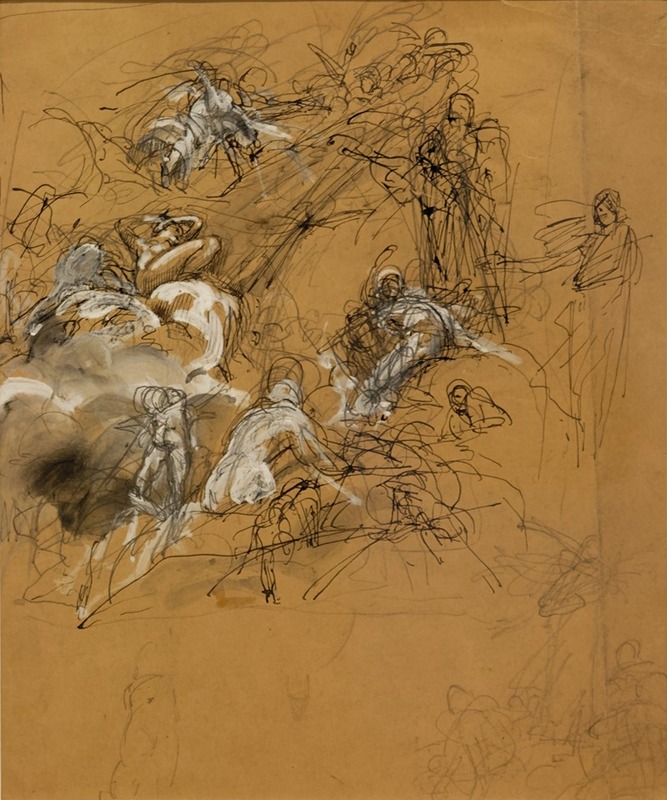
Étude de figures volantes
A hand-painted replica of Luc-Olivier Merson’s masterpiece Étude de figures volantes, meticulously crafted by professional artists to capture the true essence of the original. Each piece is created with museum-quality canvas and rare mineral pigments, carefully painted by experienced artists with delicate brushstrokes and rich, layered colors to perfectly recreate the texture of the original artwork. Unlike machine-printed reproductions, this hand-painted version brings the painting to life, infused with the artist’s emotions and skill in every stroke. Whether for personal collection or home decoration, it instantly elevates the artistic atmosphere of any space.
Luc-Olivier Merson was a notable French painter and illustrator, recognized for his contributions to the Symbolist movement in art. Born in Paris in 1846, Merson was a student of the École des Beaux-Arts and studied under the tutelage of Gustave Chassevent-Bacques and Isidore Pils. He gained prominence in the late 19th and early 20th centuries, particularly for his historical and religious paintings, as well as his work in illustration and design.
One of Merson's works, "Étude de figures volantes," which translates to "Study of Flying Figures," exemplifies his interest in movement and the ethereal qualities of the human form. While specific details about this particular piece are limited, it is consistent with Merson's broader artistic style, which often incorporated elements of fantasy and allegory. His works frequently depicted mythological or religious themes, characterized by meticulous attention to detail and a delicate, almost dreamlike quality.
Merson's art was part of a broader Symbolist movement that emerged in the late 19th century as a reaction against the realism and naturalism that dominated the art world at the time. Symbolists sought to express the metaphysical and the emotional, often through the use of symbolic imagery and themes drawn from mythology, literature, and religion. Merson's work, including "Étude de figures volantes," reflects these tendencies, with its focus on the spiritual and the otherworldly.
In addition to his paintings, Merson was also a prolific illustrator. He contributed illustrations to various publications and was involved in designing postage stamps and banknotes, showcasing his versatility as an artist. His design for the French 100 Francs banknote, featuring the image of the goddess Ceres, is particularly well-known.
Merson's contributions to art were recognized during his lifetime, and he received several accolades, including the prestigious Prix de Rome in 1869. This award allowed him to study at the Villa Medici in Rome, where he further developed his artistic style and thematic interests. His time in Italy exposed him to Renaissance art, which influenced his approach to composition and detail.
Despite the acclaim he received, Merson's work fell out of favor in the early 20th century as modernist movements began to dominate the art scene. However, his paintings and illustrations have experienced a resurgence of interest in recent years, as art historians and collectors have re-evaluated the contributions of Symbolist artists to the broader narrative of art history.
Today, Luc-Olivier Merson is remembered as a significant figure in the Symbolist movement, and his works continue to be studied for their technical skill and imaginative qualities. "Étude de figures volantes," while not as widely known as some of his other pieces, remains a testament to his ability to capture the grace and mystery of the human form in flight, embodying the spirit of an era that sought to transcend the material world through art.






